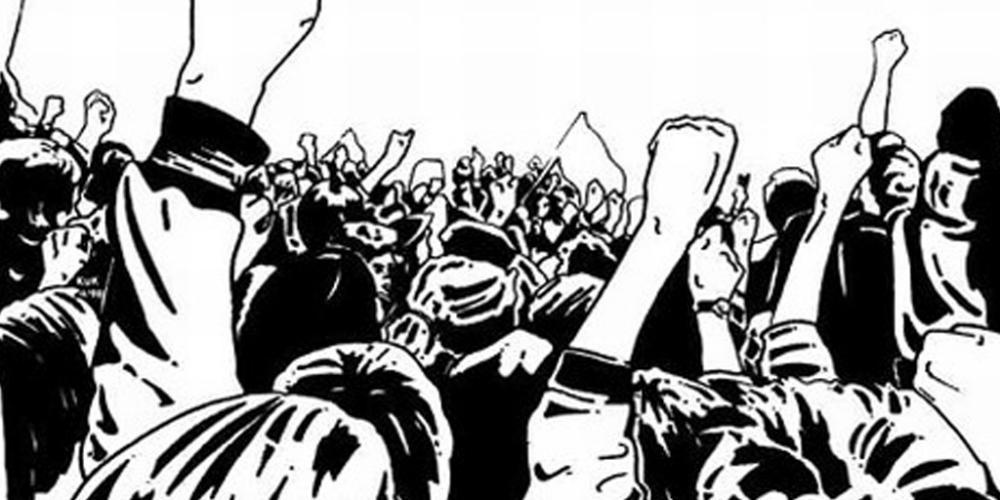At the recent biennial delegate conference of the Irish Congress of Trade Unions a motion from Dublin Council of Trade Unions was passed to seek alternative legislation to restore all rights lost as a result of the Industrial Relations Act (1990).
The 1990 act was a direct result of the “social partnership” era, which included the largest shift in power from labour to capital in a century. Reassurances were given to the trade union movement by the then minister for labour, Bertie Ahern—a former union official—who was seen as a friend of the trade union movement at the time. He wasn’t: he was the epitome of poacher-turned-gamekeeper; his loyalty was always to himself, as later revelations about his financial affairs demonstrated.
The 1990 act took away union autonomy and, in doing so, took away workers’ power. It forced unions to adopt new internal rules, as set out in the legislation. It also put a ban on a lot of actions that were available to unions up until then by repealing previous employment legislation.
What follows are some of the rights that were lost by workers as a result of the 1990 act.
In relation to picketing, major restrictions were laid down in part 2, section 11, on where and when pickets could be placed. The decisions about where and when to picket must be returned to the trade union and its members, including decisions on secondary picketing.
Support strikes, solidarity actions, political strikes, sit-ins and occupations are all now illegal. These actions were not taken lightly but must be available at the discretion of the workers in dispute. Solidarity action, support strikes and working-class unity are the bedrock of working-class power. Once it was outlawed, workers were isolated and divided. As a result, pay, conditions and union density plummeted.
The decision in relation to the length of notice given to an employer of pending industrial action must be decided by workers and their union. Employers use the notice period to put in contingency measures that demolish the effect of the strike.
In some disputes immediate action may be necessary, for example on a health and safety issue, in the case of an individual worker, or a situation similar to the closure of Clery’s department store. The Clery’s dispute is a clear example of why workers in dispute must be able to occupy a premises in the course of a dispute.
The definition of a worker must be altered to include bogus self-employed, contract workers, and those in the gig economy—that is, anybody who provides services to another, regardless of the nature of the contract under which they are employed.
In part 2, section 14, rules are imposed on unions in relation to ballots for industrial action. In fact this section completely ends union autonomy. The act lays down that trade unions must ballot “all members whom it is reasonable . . . for the union concerned to believe will be called upon to engage in the strike or other industrial action,” and the union will take reasonable steps to ensure that every member entitled to vote will vote “without interference from, or constraint imposed by, the union or any of its members, officials or employees and, so far as is reasonably possible, that such members shall be given a fair opportunity of voting.”
This is not just in the case of a strike but any industrial action, be it a work to rule, a ban on overtime, or any other type of action taken by workers to defend their rights.
When all the ballots are counted, seven days’ notice must be given to the employer before the action can be taken. The wording of the act is so broad that it is open to multiple interpretations, and the scope for companies to seek injunctions for invalid ballots is limitless. We have seen by the number of injunctions granted to employers that the judiciary are no friends of trade unions or workers.
An ill-judged comment by a union official or union member during the period of the ballot could invalidate the poll as “interference.” If there is a low turnout a judge can decide that it is not credible that everybody entitled to vote was given a fair opportunity—which happened with airline pilots in Ryanair when there was a low turnout for a strike ballot.
To reverse these conditions on unions and return rights lost to workers as a result, section 14 of the 1990 act must be abolished. This section should be replaced with a new section that gives trade unions complete autonomy in setting all internal rules and regulations.
The Trade Disputes Act (1906) stated that anything done in a trade dispute, so long as that action was not illegal in itself, would be free of criminal and civil liability. This right needs to be reinstated, to supersede all conditions imposed on immunities under the 1990 act.
These changes will go a long way towards returning rights lost to workers as a result of the 1990 act; but on their own they are not enough, without the right to union recognition and union access to all workers, coupled with full collective bargaining rights.
If a Workers’ Rights Act, to include all the above, is introduced there will be a more level playing-field between worker and employer. With the balance of power more equal, levels of exploitation will drop drastically as employers realise that workers have the power to stop them. Employers who continue to exploit and mistreat workers will be taken on and stopped.
No employer has anything to fear from workers having rights if they are treating workers fairly. A fair day’s work for a fair day’s pay is all workers expect. Of course the reverse side of this is “An injury to one is the concern of all.” If you exploit us we will withdraw our labour and shut you down.






